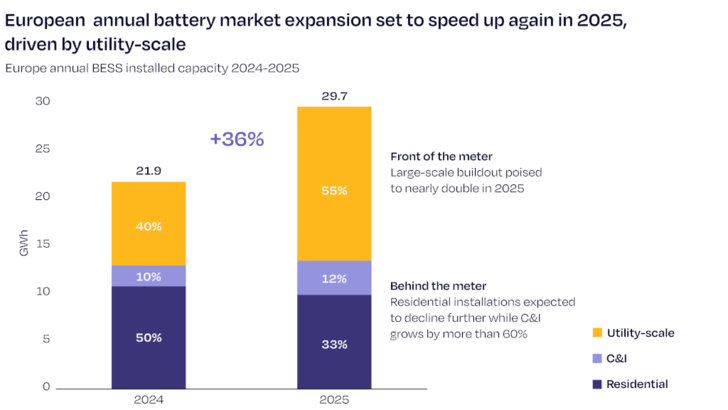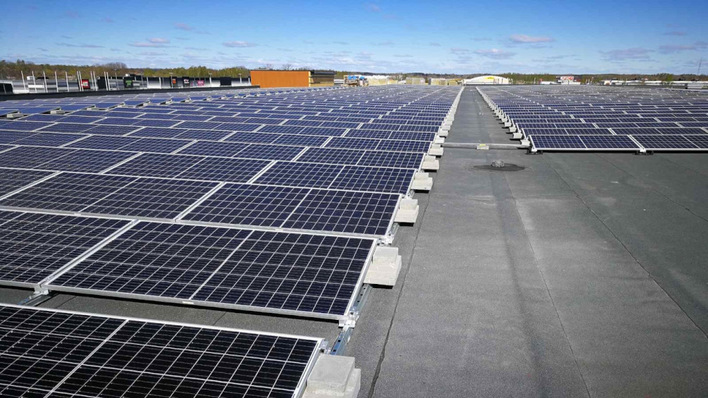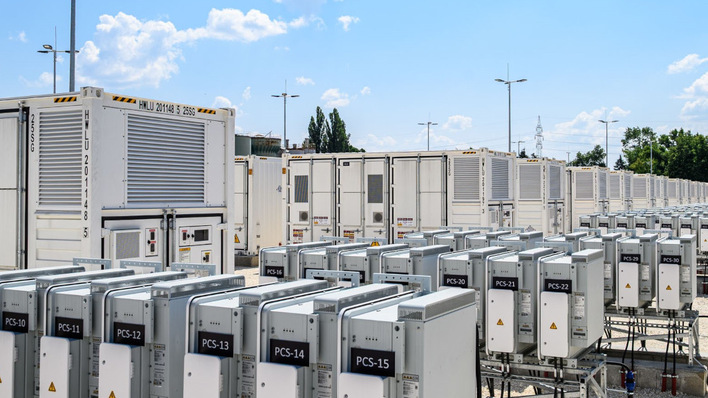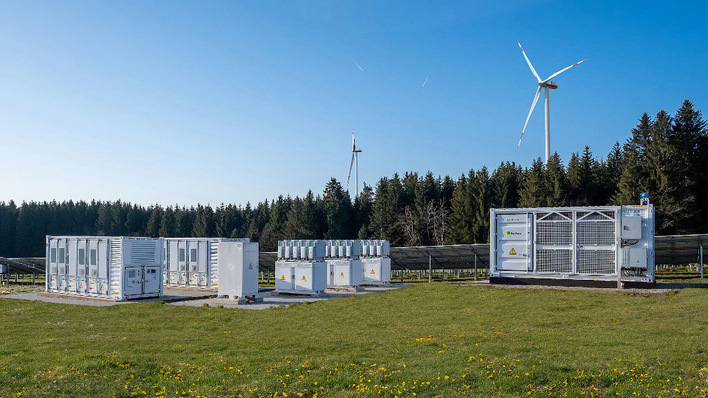21.9 GWh of battery energy storage systems (BESS) was installed in Europe in 2024, marking the eleventh consecutive year of record breaking-installations, and bringing Europe’s total battery fleet to 61.1 GWh. However, the annual growth rate slowed down to 15% in 2024, after three consecutive years of doubling newly added capacity.
Our next investor newsletter: Innovations for project business
The BESS market in Europe is set to grow faster in the next years, although not at the levels required. In the most-likely scenario for 2025, 29.7 GWh of battery storage will be installed in Europe, representing a 36% annual growth. By 2029, the report anticipates a sixfold increase to nearly 120 GWh, driving total capacity to 400 GWh (EU-27: 334 GWh). However, this remains far below the levels required to meet flexibility needs in a renewable-driven energy system. According to our Mission Solar 2040 study, EU-27 BESS capacity must reach 780 GWh by 2030 to fully support the transition.
Large-scale battery segment growing rapdidly
Europe’s 2025 growth hinges on the large-scale utility battery projects set to come online in the course of the year. The large-scale battery segment is growing rapidly, and for the first time, is set to represent most of battery installations on the continent this year.
Market for hybrid power plants in Europe still in the starting blocks
Historically, home batteries have driven the European battery storage market, but 2025 will mark their drop to represent 33% of the market. As the effects of the energy crisis wane – and related support schemes – European citizens are less inclined to install batteries at home. On the other hand, commercial & industrial battery storage is set to grow slightly in 2025, as businesses tap into the energy security and cost effectiveness that solar and storage can offer.
Sweden: Batteries pave the way for more renewable electricity
In 2024, the top five national markets added 78% of Europe’s new battery capacity, though there was some movement in their exact standings. Germany maintained its leading role despite a drop in residential installations and the slow uptake of larger batteries. Italy’s home battery segment also decreased, but the large-scale segment’s capacity surge brought the market to new heights. The UK experienced a temporary slump due to project delays at the large-scale level, but remained at a higher altitude than Austria and Sweden, which both reached the GWh scale for the first time thanks to a very strong growth in the residential and commercial and industrial (C&I) market.
Political recommendations
Alongside the market analysis, SolarPower Europe makes a number of recommendations to reach the required levels of batteries in Europe by the end of the decade:
1. The European Commission must adopt an Energy Storage Action Plan within a broader Flexibility Package, to harmonise markets, remove regulatory barriers, and ensure storage is integral to national energy strategies.
2. Grid connection procedures and pricing frameworks must be reformed to facilitate access, prioritise hybrid systems, and fairly allocate costs.
3. BESS must have full and fair access to electricity markets, with clear revenue streams, updated Guarantees of Origin frameworks, and permission to stack revenues.
4. Balancing markets must become fully competitive and accessible to storage, through harmonised technical standards and transparent procurement.
5. Europe must enhance smart metering and data communication standards to enable real-time energy management and seamless BESS integration.
Walburga Hemetsberger, CEO of SolarPower Europe said: “With solar energy mainstreaming across the continent, now is the time for European decisionmakers to put batteries at the centre of a flexible, electrified, energy system. We urge the European Commission to double-down on their efforts here and come forward with an EU Energy Storage Action Plan as part of a broader Energy System Flexibility Package. The recent electricity outage in the Iberian Peninsula is a stark reminder of why this is important.”
The European Market Outlook for Battery Storage report was launched at ees Europe under the umbrella of The smarter E Europe.(hcn)
Join the free webinar on Wednesday 14 May, 14:00-15:30 CEST, to learn more about the key takeaways from the European Market Outlook for Battery Storage 2025-2029.









